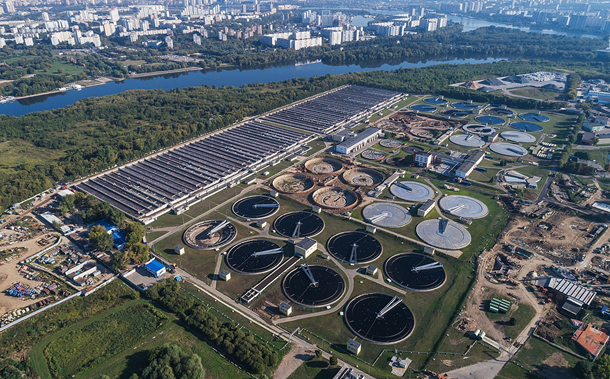The Effect of Recycled Material and Buton Granular Asphalt (BGA) on Asphalt Concrete Mixture Performance
Downloads
Doi:10.28991/CEJ-2023-09-06-09
Full Text:PDF
Downloads
[2] Ma, Y., Wang, S., Zhou, H., Hu, W., Polaczyk, P., & Huang, B. (2021). Potential alternative to styrene–butadiene–styrene for asphalt modification using recycled rubber–plastic blends. Journal of Materials in Civil Engineering, 33(12), 04021341. doi:10.1061/(ASCE)MT.1943-5533.0003946.
[3] Irmawaty, R., Parung, H., Asad Abdurrahman, M., & Nur Qalbi, I. (2020). Flexural toughness of concrete with aggregate substitution (steel fiber, crumb rubber and tire chips). IOP Conference Series: Earth and Environmental Science, 419(1), 12038. doi:10.1088/1755-1315/419/1/012038.
[4] Rahim, I. R., Lando, A. T., Sari, K., Asriyanti, E., & Ihsan, M. (2019). Feasibility Study of Biogas from Banana Peel Waste and Livestock Manure Mixture as Renewable Energy Source. IOP Conference Series: Materials Science and Engineering, 676(1), 12024. doi:10.1088/1757-899X/676/1/012024.
[5] Tjaronge, M. W., & Irmawaty, R. (2013). Influence of water immersion on physical properties of porous asphalt containing liquid asbuton as bituminous asphalt binder. Proceedings of 3rd International conference and Sustainable Construction Material and Technologies-SCTM, 18-21 August, 2013, Kyoto, Japan.
[6] Monika, F., Prayuda, H., Cahyati, M. D., Augustin, E. N., Rahman, H. A., & Prasintasari, A. D. (2022). Engineering Properties of Concrete Made with Coal Bottom Ash as Sustainable Construction Materials. Civil Engineering Journal (Iran), 8(1), 181–194. doi:10.28991/CEJ-2022-08-01-014.
[7] Al-Qadi, I. L., Aurangzeb, Q., Carpenter, S. H., Pine, W. J., & Trepanier, J. (2012). Impact of high RAP content on structural and performance properties of asphalt mixtures. Research Report FHWA-ICT-12-002, Illinois Center for Transportation, Illinois, United States.
[8] Nistratov, A. V., Klimenko, N. N., Pustynnikov, I. V., & Vu, L. K. (2022). Thermal Regeneration and Reuse of Carbon and Glass Fibers from Waste Composites. Emerging Science Journal, 6(5), 967-984. doi:10.28991/ESJ-2022-06-05-04.
[9] Copeland, A. (2011). Reclaimed asphalt pavement in asphalt mixtures: State of the practice. Technical Report FHWA-HRT-11-021, Federal Highway Administration. Office of Research, Development, and Technology, Washington, United States.
[10] Bueche, N. (2009). Warm asphalt bituminous mixtures with regards to energy, emissions and performance. Young Researchers Seminar (YRS), Torino, Italy.
[11] Farooq, M. A., & Mir, M. S. (2017). Use of reclaimed asphalt pavement (RAP) in warm mix asphalt (WMA) pavements: A review. Innovative Infrastructure Solutions, 2, 1-9. doi:10.1007/s41062-017-0058-7.
[12] Pradani, N., Irmawaty, R., Tjaronge, M. W., & Rahim, I. R. (2023). Basic Properties of Post-Disaster Recycled Material in Palu City as Flexible Pavement Materials. AIP Conference Proceedings, 2643. doi:10.1063/5.0111145.
[13] Obaid, A., Nazzal, M. D., Abu Qtaish, L., Kim, S. S., Abbas, A., Arefin, M., & Quasem, T. (2019). Effect of RAP Source on Cracking Resistance of Asphalt Mixtures with High RAP Contents. Journal of Materials in Civil Engineering, 31(10). doi:10.1061/(asce)mt.1943-5533.0002817.
[14] Montañez, J., Caro, S., Carrizosa, D., Calvo, A., & Sánchez, X. (2020). Variability of the mechanical properties of Reclaimed Asphalt Pavement (RAP) obtained from different sources. Construction and Building Materials, 230, 116968. doi:10.1016/j.conbuildmat.2019.116968.
[15] Reyes-Ortiz, O., Berardinelli, E., Alvarez, A. E., Carvajal-Muñoz, J. S., & Fuentes, L. G. (2012). Evaluation of Hot Mix Asphalt Mixtures with Replacement of Aggregates by Reclaimed Asphalt Pavement (RAP) Material. Procedia - Social and Behavioral Sciences, 53, 379–388. doi:10.1016/j.sbspro.2012.09.889.
[16] Bethary, R. T., Subagio, B. S., Rahman, H., & Suaryana, N. (2019). Effect of recycled materials on Marshall performance of hot asphalt mixture (HMA-RAP). IOP Conference Series: Materials Science and Engineering, 508(1), 12048. doi:10.1088/1757-899X/508/1/012048.
[17] Zaumanis, M., & Mallick, R. B. (2015). Review of very high-content reclaimed asphalt use in plant-produced pavements: State of the art. International Journal of Pavement Engineering, 16(1), 39–55. doi:10.1080/10298436.2014.893331.
[18] Silva, H. M. R. D., Oliveira, J. R. M., & Jesus, C. M. G. (2012). Are totally recycled hot mix asphalts a sustainable alternative for road paving? Resources, Conservation and Recycling, 60, 38–48. doi:10.1016/j.resconrec.2011.11.013.
[19] Asphalt Institute. (1993). Mix Design Method for Asphaltic Concrete and Other Hot Mix Types. Asphalt Institute Manual Series No. 2, Asphalt Institute, Lexington, United States.
[20] Valdés, G., Pérez-Jiménez, F., Miró, R., Martínez, A., & Botella, R. (2011). Experimental study of recycled asphalt mixtures with high percentages of reclaimed asphalt pavement (RAP). Construction and Building Materials, 25(3), 1289–1297. doi:10.1016/j.conbuildmat.2010.09.016.
[21] Federal Highway Administration. (2016). User Guidelines for Waste and Byproduct Materials in Pavement Construction. Federal Highway Administration (FHWA), U. S. Department of Transportation, Washington, United States.
[22] Zhu, J., Ma, T., Fan, J., Fang, Z., Chen, T., & Zhou, Y. (2020). Experimental study of high modulus asphalt mixture containing reclaimed asphalt pavement. Journal of Cleaner Production, 263, 121447. doi:10.1016/j.jclepro.2020.121447.
[23] Taherkhani, H., & Noorian, F. (2020). Comparing the effects of waste engine and cooking oil on the properties of asphalt concrete containing reclaimed asphalt pavement (RAP). Road Materials and Pavement Design, 21(5), 1238–1257. doi:10.1080/14680629.2018.1546220.
[24] Zha, X., Wang, Z., Liu, A., & Qian, G. (2019). Experimental Analysis on Material Properties for Buton Rock Asphalt and Its Modified Asphalt. Transportation Research Congress, 237–247. doi:10.1061/9780784482513.023.
[25] Suaryana, N. (2016). Performance evaluation of stone matrix asphalt using indonesian natural rock asphalt as stabilizer. International Journal of Pavement Research and Technology, 9(5), 387–392. doi:10.1016/j.ijprt.2016.09.007.
[26] Suryana, A., & Tobing, S. M. (2003). Inventory on solid bitumen sediment using ‘outcrop drilling'in Southern Buton region, Buton Regency, Province Southeast Sulawesi. Colloquium on Results Activities of Mineral Resources Inventory”DIM, the TA, Bandung, Indonesian.
[27] One, L., Tjaronge, M. W., Irmawaty, R., & Hustim, M. (2020). Effect of Buton granular asphalt gradation and cement as filler on performance of cold mix asphalt using limestone aggregate. Journal of Engineering Science and Technology, 15(1), 493–507.
[28] Nega, A., Karami, M., & Nikraz, H. (2019). Permanent Deformation Characteristics of BRA Modified Asphalt Paving Mixtures Using Dynamic Creep Test Analysis. Airfield and Highway Pavements 2019. doi:10.1061/9780784482469.008.
[29] Bulgis, Tjaronge, M. W., Adisasmita, S. A., & Hustim, M. (2017). Effect of Buton Granular Asphalt (BGA) on compressive stress-strain behavior of asphalt emulsion mixture. IOP Conference Series: Materials Science and Engineering, 271(1), 12069. doi:10.1088/1757-899X/271/1/012069.
[30] Gaus, A., Tjaronge, M. W., Ali, N., & Djamaluddin, R. (2015). Compressive strength of asphalt concrete binder course (AC-BC) mixture using buton granular asphalt (BGA). Procedia Engineering, 125, 657–662. doi:10.1016/j.proeng.2015.11.097.
[31] Mabui, D. S., Tjaronge, M. W., Adisasmita, S. A., & Pasra, M. (2020). Resistance to cohesion loss in cantabro test on specimens of porous asphalt containing modificated asbuton. IOP Conference Series: Earth and Environmental Science, 419(1), 12100. doi:10.1088/1755-1315/419/1/012100.
[32] Mahyuddin, A., Tjaronge, M. W., Ali, N., & Isran Ramli, M. (2017). Experimental analysis on stability and indirect tensile strength in asphalt emulsion mixture containing Buton granular asphalt. International Journal of Applied Engineering Research, 12(12), 3162–3169.
[33] ASTM D2172/D2172M-17e1. (2018). Standard Test Methods for Quantitative Extraction of Asphalt Binder from Asphalt Mixtures. ASTM International, Pennsylvania, United States. doi:10.1520/D2172_D2172M-17E01.
[34] ASTM D5404/D5404M-12. (2017). Standard Practice for Recovery of Asphalt from Solution Using the Rotary Evaporator. ASTM International, Pennsylvania, United States. doi:10.1520/D5404_D5404M-12R17.
[35] ASTM D6931-12. (2017). Standard Test Method for Indirect Tensile (IDT) Strength of Bituminous Mixtures. ASTM International, Pennsylvania, United States. doi:10.1520/D6931-12.
[36] Modarres, A. (2013). Investigating the toughness and fatigue behavior of conventional and SBS modified asphalt mixes. Construction and Building Materials, 47, 218–222. doi:10.1016/j.conbuildmat.2013.05.044.
[37] Zhu, Y., Dave, E. V., Rahbar-Rastegar, R., Daniel, J. S., & Zofka, A. (2017). Comprehensive evaluation of low-temperature fracture indices for asphalt mixtures. Road Materials and Pavement Design, 18(sup4), 467–490. doi:10.1080/14680629.2017.1389085.
[38] Kim, M., Mohammad, L. N., & Elseifi, M. A. (2012). Characterization of Fracture Properties of Asphalt Mixtures as Measured by Semicircular Bend Test and Indirect Tension Test. Transportation Research Record: Journal of the Transportation Research Board, 2296(1), 115–124. doi:10.3141/2296-12.
[39] Barman, M., Ghabchi, R., Singh, D., Zaman, M., & Commuri, S. (2018). An alternative analysis of indirect tensile test results for evaluating fatigue characteristics of asphalt mixes. Construction and Building Materials, 166, 204–213. doi:10.1016/j.conbuildmat.2018.01.049.
[40] Pasra, M., Tjaronge, M. W., Caronge, M. A., Djamaluddin, A. R., Lapian, F. E. P., & Tumpu, M. (2022). Influence of Tensile Load on Bonding Strength of Asphalt Concrete Containing Modified Buton Asphalt and Polyethylene Terephthalate Waste: A Case Study of Indonesian Roads. International Journal of Engineering Transactions C: Aspects, 35(9), 1779–1786. doi:10.5829/ije.2022.35.09c.14.
[41] IUPAC. (1990). Compendium of Chemical Terminology (2nd Ed.). International Union of Pure and Applied Chemistry (IUPAC), Research Triangle Park, North Carolina, United States. doi.org/10.1351/goldbook.
[42] Indonesian Ministry of Public Works and Public Housing. (2018). Hot Mix Asphalt Specification. Revision 2 Section 6.3, Indonesian Ministry of Public Works and Public Housing, Jakarta Selatan, Indonesia.
[43] Xiao, F., & Amirkhanian, S. N. (2008). Resilient modulus behavior of rubberized asphalt concrete mixtures containing reclaimed asphalt pavement. Road Materials and Pavement Design, 9(4), 633–649. doi:10.1080/14680629.2008.9690142.
- Authors retain all copyrights. It is noticeable that authors will not be forced to sign any copyright transfer agreements.
- This work (including HTML and PDF Files) is licensed under a Creative Commons Attribution 4.0 International License.![]()















